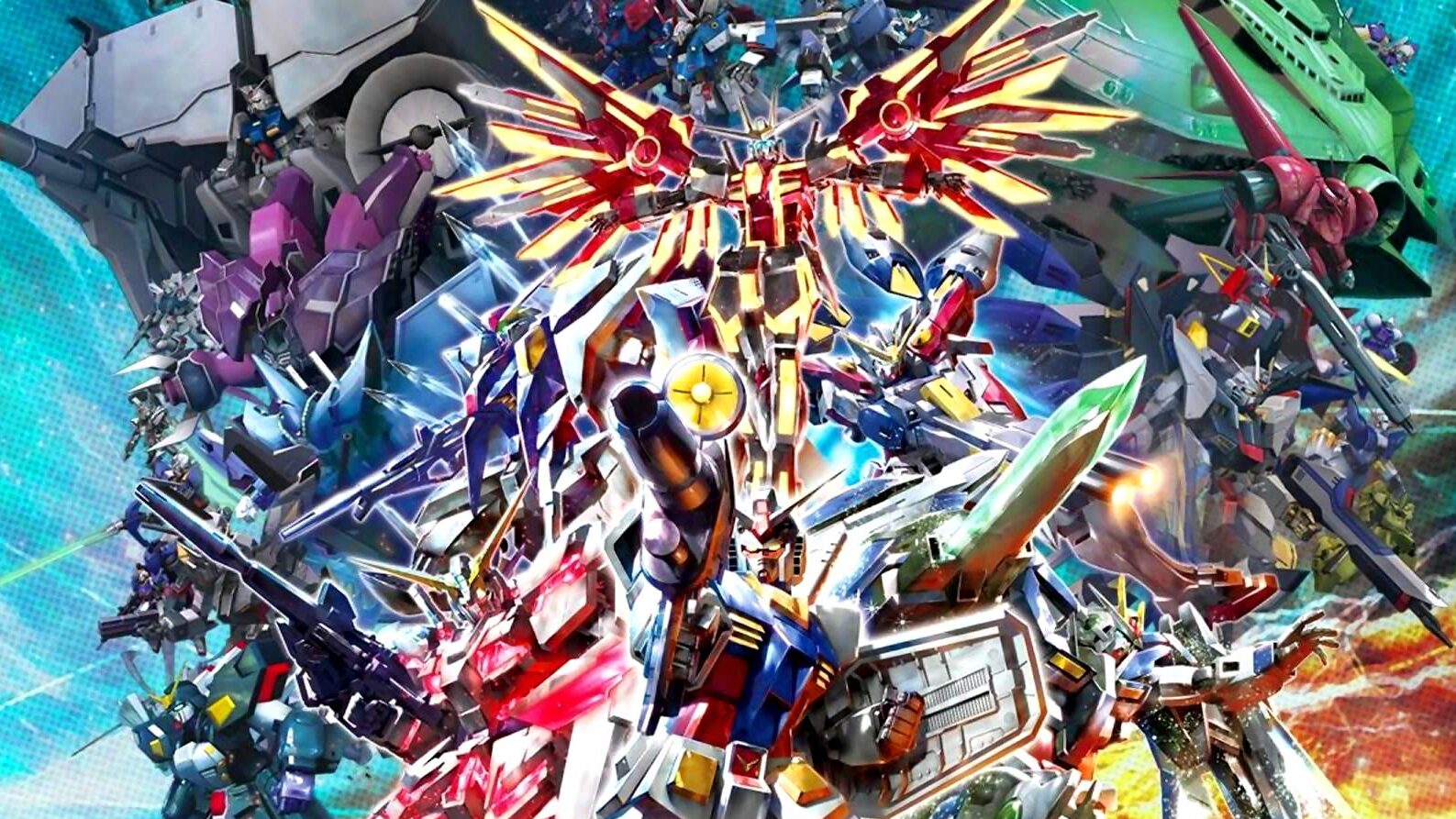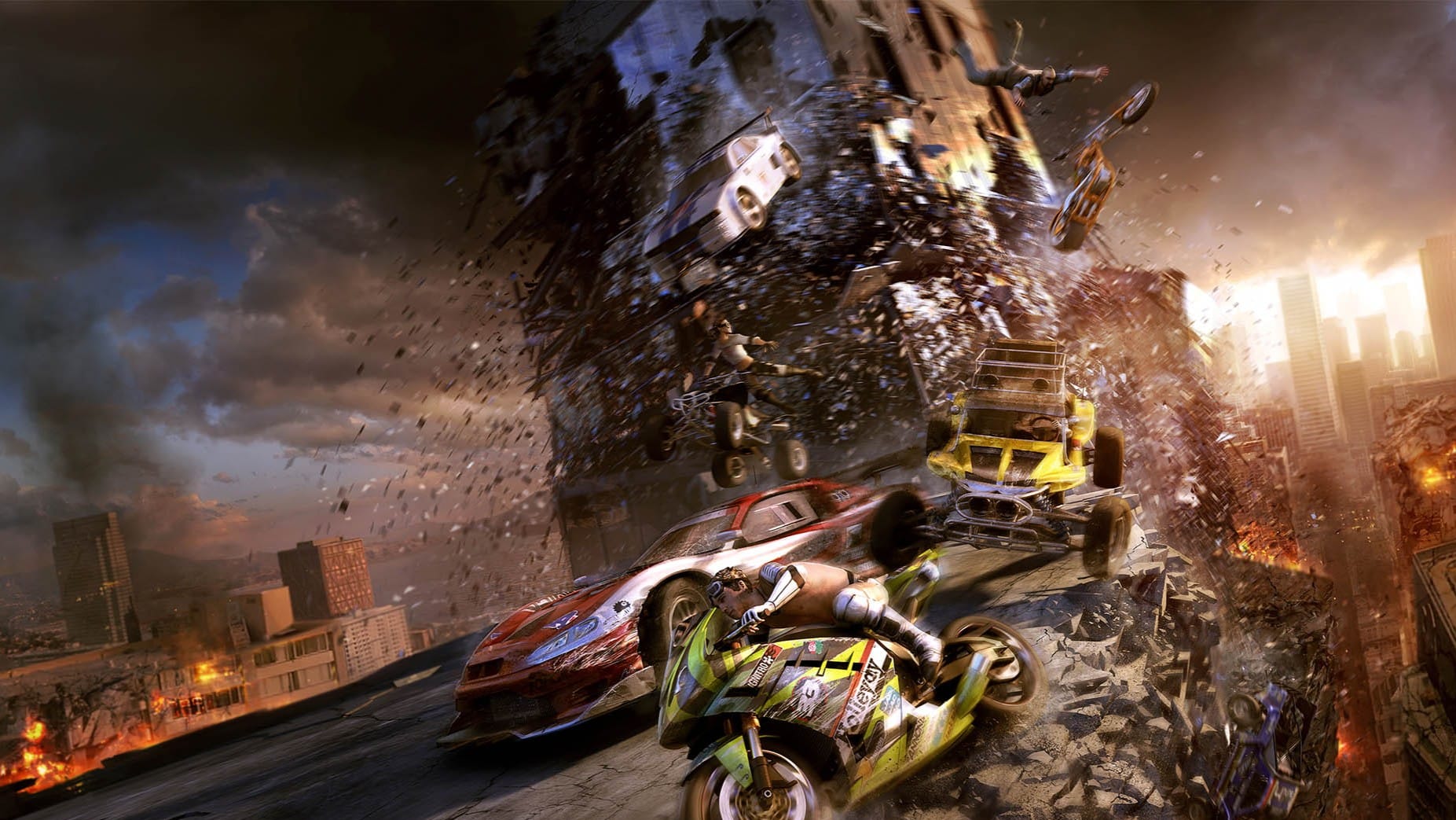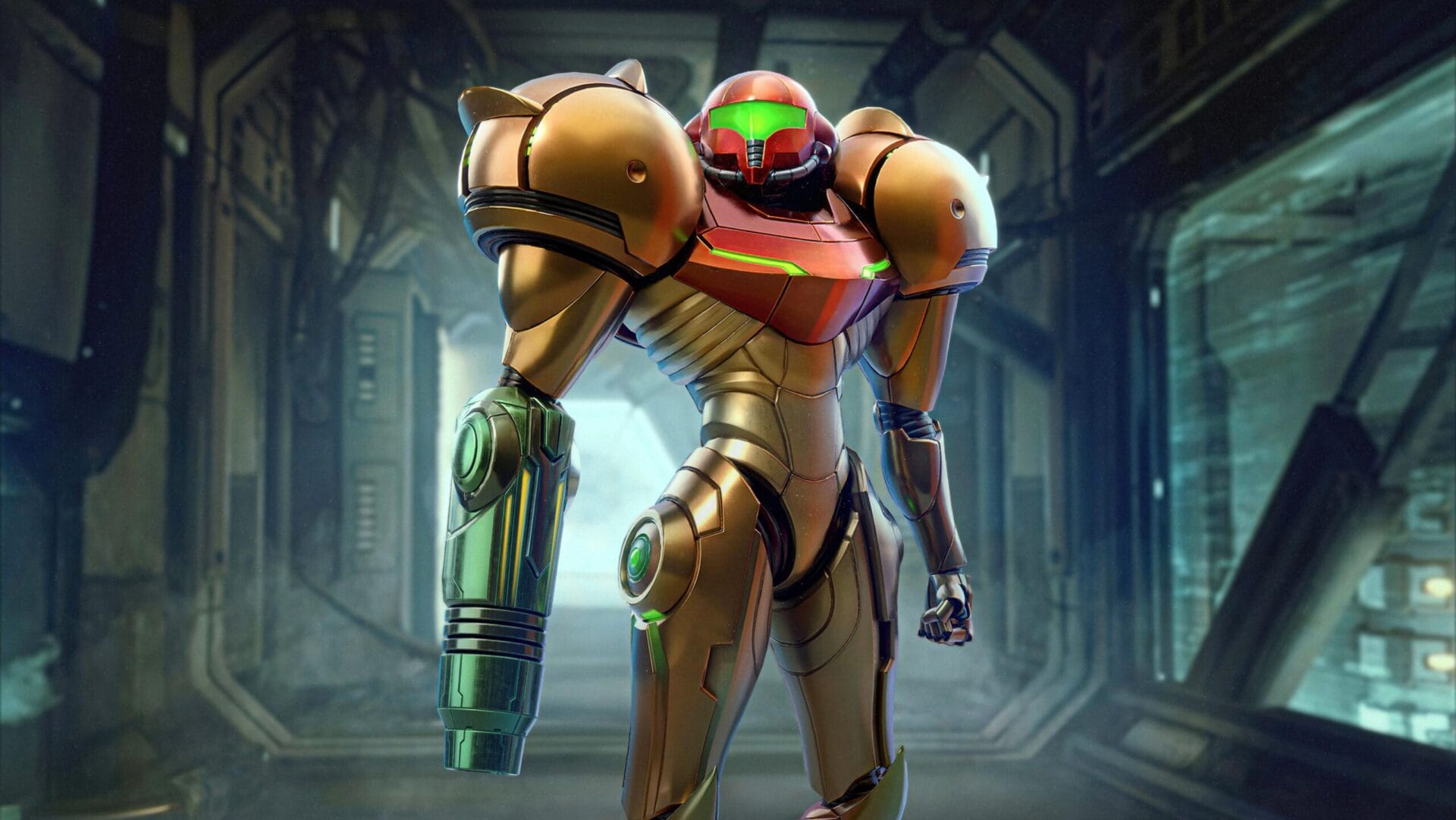When I booted up Mobile Suit Gundam Extreme VS Full Boost on my PS3, I wasn’t prepared. Not for the fan service. Not for the mechs. Definitely not for the sheer scale of it all. This wasn’t just a fighting game—it felt like I’d cracked open a digital museum of Gundam history, with every playable mobile suit polished and posed like it was ready to be put on display at a high-end anime exhibit. Even suits from the most niche, blink-and-you-missed-it Gundam side stories were here, standing shoulder to shoulder with the RX-78-2 like they’d always belonged.
It’s a dazzling spectacle—one that any Gundam fan would probably start hyperventilating over. The sheer volume of content on offer here is unreal. This is, without question, the most exhaustive Gundam roster ever squeezed into a video game, and it’s handled with more love and care than most anime tie-ins ever get.
Whether you’re a die-hard who can quote Tomino-era dialogue word-for-word or a newcomer who just thinks robots look cool, the question lingers: is Full Boost for you? Or will its sheer scale leave you in the dust? Let’s sortie in and find out.
Character Roster
Let’s get one thing straight: Gundam Extreme Vs. Full Boost isn’t just a fighting game. It’s a celebration—a full-blown festival—for everything Gundam. The moment I hit the character select screen, I just sat there and stared. The roster in Full Boost is absolutely bonkers. It’s not just big—it’s absurdly massive. We’re talking over 90 playable mobile suits, and that’s before counting the unlockables and DLC. Every series, every timeline, every fan-favorite—and plenty of “wait, that’s actually in here?” picks too. It doesn’t feel like a typical roster—it feels like someone took an entire Gundam encyclopedia and turned it into a game
Of course, the OG RX-78-2 is here, front and center. But the real surprise? The sheer number of deep-cut suits they’ve included. Obscure OVAs? You bet. War in the Pocket, Stardust Memory, F91—they’re not just sprinkled in, they’re playable with full-blown mobile suits that look and feel right out of the anime. Even that one weird Gundam show you watched once at 3AM and never saw again? It’s probably in here. It honestly felt like a fever dream the first time I piloted something like the Kapool or the G-Self in a legit fighting game setting. There’s this giddy thrill of recognizing suits you never expected to see again, and then actually getting to use them.
This isn’t a game that sticks to just the Universal Century timeline or leans too hard into the more mainstream hits like Wing or Seed. It spreads the love. Whether you’re a purist who grew up on Amuro and Char or someone who grew up watching Gundam on Toonami, there’s something here for you. It’s wild how well the game juggles all those wildly different aesthetics and mechanics—and somehow makes them all feel like they belong together.
What really impressed me is how much care was clearly put into making each suit feel authentic—not just in looks, but in how they play. The animations are spot-on, the weapon loadouts are true to the shows, and even the little voice clips and sound effects are pulled straight from the anime. This could’ve easily been a lazy crossover cash grab, but it’s not. You can tell the devs actually love this franchise. They didn’t just toss in fan-favorite suits and call it a day—they crafted something that feels like a living, breathing tribute to the entire Gundam legacy.
Whether you’re piloting the RX-78-2 or flying into battle with the ∀ Gundam, you’ll feel like the star of your own episode. And for longtime fans, there’s nothing quite like seeing your favorite underdog mobile suit land the final hit in a chaotic 2v2 duel.
Graphics & Visuals
Mobile Suit Gundam: Extreme Vs. Full Boost doesn’t just look like Gundam—it feels like it was assembled by a team of master Gunpla builders with a love for polish, precision, and spectacle. Even on aging PS3 hardware, it delivers visuals that punch way above their weight class.
There’s this beautiful balance in how the mobile suits are rendered—equal parts stylized and true-to-anime. Cel-shading is used sparingly, not slathered on like a Saturday morning cartoon, but just enough to give each suit a clean outline and a little pop against the chaotic backgrounds. The result? A subtle but striking visual identity that respects the source material and the limitations of the platform.
The metallic sheens. The glowing visors. The way light bounces off a beam saber mid-swing. It’s mechanical elegance with battlefield grime. Each unit looks like it was plucked from a Bandai showroom and tossed into a high-speed firefight at Mach 3.
From the classic, utilitarian look of the GM units to the ornate madness of suits like the Qan[T] or the Crossbone Gundam X1 Full Cloth, there’s a constant push and pull between grit and grandeur. It’s less “anime game” and more “playable production model kit.”
Everything in Full Boost moves like it’s trying to sell you a ticket to the arcade. Attacks are big, flashy, and readable—but not cartoonish. There’s a precision to how each mobile suit swings its beam saber, fires a charged rifle shot, or dodges an incoming barrage. The animation work is crisp, not cluttered, and that arcade DNA pulses through every frame.
When you boost-dash across the map, it feels like you’re cutting through the air. Melee finishers land with a heavy thud. Mid-air dogfights turn into balletic beatdowns with split-second timing. Every animation is kinetic, full of impact, and designed to give you that “holy crap, I did that” feeling—even if you’re just mashing for dear life in your first match.
And it’s not just about flashy attacks. Even the smaller, in-between moments—jetting into cover, switching weapons mid-flight, turning on a dime to protect your partner—are fluid and fast. It keeps the action legible but never static. Always stylish, never stiff.
There are moments—brief, explosive, beautiful—where the action slows down just enough for your brain to register what’s happening. And that’s when you get it. That perfect frame. RX-78-2 mid-air, beam saber clashing with a Zaku’s axe. Wing Zero launching a Twin Buster Rifle blast while the background erupts into cosmic debris. The Turn A soaring through the sky like a titanium angel.
Pause the game at the right second, and it looks like a cel from the anime. No filter needed. No mods. Just raw, in-game drama that nails the framing and flair of the Gundam franchise’s most iconic moments. It’s like every match is producing its own highlight reel, ready to be screen-capped, gif’d, and posted with a timestamp and a keyboard smash.
There’s a certain awe baked into the presentation—like the devs knew these suits were sacred to fans. So they made sure everything you see onscreen honors that history. And honestly? It shows. This is what Gundam looks like when it’s not just playable, but posed.
Gameplay & Combat
I went in expecting something closer to Dynasty Warriors: Gundam—you know, flashy attacks, lots of explosions, mowing down wave after wave of grunt suits. But Full Boost isn’t that. Not even a little. This game is a completely different beast—lean, lightning-fast, and brutally precise. It doesn’t want you mashing buttons. It wants you sharp, alert, and locked in from the second the match starts.
The 2v2 format is where the good stuff really happens. On paper, it sounds chaotic—four massive mobile suits zipping around the map, unleashing super moves and lasers nonstop. But once you start playing, it all clicks. There’s structure here. It’s not a free-for-all brawl—it’s a tactical duel where teamwork and timing can make or break a match
You’ve got to keep an eye on your partner’s position, protect each other, and coordinate your attacks. Aggression gets punished. Sloppiness gets exposed. The moment you forget where your teammate is or let your opponent isolate you, it’s over. It’s like a chess match being played at 200 kilometers per hour with beam sabers and boosters.
Let’s talk movement, because this is where Full Boost really separates itself. Every mobile suit has a limited boost gauge, and managing it is absolutely crucial. It’s your dash, your air dodge, your cancel mechanic, your retreat button—all in one.
You’re constantly making split-second decisions: Do I spend a bit of boost to chase down a retreating enemy, or save it in case I need to dodge a surprise beam cannon shot? Do I risk a risky melee string, knowing I might not have enough juice left to bail out? This kind of micromanagement gives the game its edge. It turns every encounter into a mental tug-of-war between risk and reward.
When it all clicks—when you’re flying circles around your opponent, weaving through their shots, canceling attacks mid-string and countering with a perfectly-timed slash—it feels incredible. You’re not just controlling a mobile suit. You are the mobile suit.
What surprised me the most is just how much of a fighting game this actually is. It’s not just about reactions—it’s about reads, matchups, and spacing. Some suits specialize in zoning with high-pressure beam spam. Others are close-range monsters that thrive in melee duels. There’s a genuine meta here, complete with tiers, synergy picks, and matchup knowledge.
The game gives you tools to succeed, but it doesn’t hold your hand. If you want to win consistently, you’ve got to learn your suit inside and out—understand its range, its startup frames, its cancel options. You’ve got to study. And when you finally get good? That’s when Full Boost becomes electric.
What really elevates the combat is how alive every battle feels. The screen is constantly lighting up with laser blasts, explosions, and dramatic callouts. Melee clashes are full of camera shakes, slow-mo flourishes, and impact sparks. Even when you’re getting your ass kicked, it looks awesome.
There’s this momentum that builds in every match, where one good combo or well-timed counter can shift the entire tide of battle. One second you’re on the ropes, and the next you’re boosting in to land the final hit as the announcer screams your suit’s name. It’s cinematic, it’s stressful, and it’s so satisfying.
Full Boost doesn’t just throw you into fights—it immerses you in them. Every match is a highlight reel, every victory a hard-earned war story. And honestly? That’s what makes it so special.
Campaign
You can feel it the second you boot up Full Boost: this game was born in the arcade. Everything about it—from the way matches are structured to how fast you’re thrown into action—screams “100 yen at a time.” It’s slick, punchy, and totally focused on delivering adrenaline in short, explosive bursts.
This isn’t a game built around long sessions or deep progression systems. It’s designed for pick-up-and-play mayhem. You hop in, pick a suit, and within seconds you’re mid-air in a high-speed, laser-filled deathmatch. Each round lasts just a few minutes, and once it’s over, you’re either jumping into the next fight or heading back to the main menu.
That design works brilliantly if you’re in the right mindset. Want a quick 15-minute mecha fix before dinner? Perfect. Got a friend over and want to squeeze in a few local matches before calling it a night? Even better. But if you’re hoping for a sprawling campaign or a sense of narrative momentum, well… you’re in the wrong cockpit.
There is technically some kind of single-player progression mode, but let’s be real—it’s barely there. There’s no real story to follow, no cutscenes, no grand overarching narrative. It’s just a series of battles, maybe with a few unlockables or harder bosses sprinkled in if you push far enough.
And honestly? That’s fine—for the most part. Full Boost doesn’t need a sweeping story when it gives you this much content to play with. But I won’t lie—there were moments where I wished the game gave me a little more context, a reason to keep pushing beyond the thrill of the fight. A mission structure, a loose plot, something to tie it all together.
The menus are pure arcade carryover: stripped-down, functional, and sometimes way too cryptic—especially if you don’t read Japanese. You’ll find what you need eventually, but it’s not always intuitive. Want to switch your assist unit or change a setting? Better hope you remember where that option was, because nothing’s clearly labeled unless you’ve got a guide open on your phone.
But in a weird way, that minimalism kind of works. It keeps you focused on what matters: getting into matches and blowing stuff up. No fluff, no filler. Just explosions and hype.
This game shines brightest in short sessions. It’s built for the kind of play where you fire it up, fight a few matches, and then dip. Anything longer than that? You’ll start to feel the repetition. Without a strong single-player hook or evolving structure, extended play can wear thin unless you’re grinding for unlocks or diving deep into competitive strategy.
But if you treat Full Boost like what it truly is—a console port of a Japanese arcade fighter—it clicks. It’s meant to be played in sprints, not marathons. And in that role, it absolutely excels.
Local and Online Multiplayer
One of the things I appreciate most about Full Boost is how much fun it still is to play with friends—especially locally. Sure, the online scene has thinned out over the years, but this game was built with arcade-style co-op in mind, and it still delivers some of the best couch multiplayer I’ve had on the PS3.
If you’ve got a second controller and a fellow Gundam fan nearby, Full Boost absolutely comes alive. Sitting side by side, coordinating boost dodges and team attacks, yelling “COVER ME!” across the room—it’s pure chaos in the best possible way. Local co-op lets you team up for arcade runs, tackle missions together, or just spar for fun.
Even now, this is hands-down the best way to play. It feels like you’ve set up your own personal arcade at home. No lag, no matchmaking issues, just instant-action fun with a friend and a ridiculous selection of mobile suits to mess around with.
If you’re serious about playing online, you’ll probably need to set up a Japanese PSN account, dig through a few community guides, and join a Discord or two. It’s a little work, but if you want that classic 2v2 online experience, it is possible. And when it works? It still feels smooth, snappy, and totally worth it.
Whether you’re teaming up or going head-to-head, Full Boost holds up incredibly well in local multiplayer. It’s fast, it’s smooth, and it’s the kind of game that turns a quiet night in into a full-blown Gundam battle royale.
Language Barrier
Let’s not dance around it—Full Boost was never officially localized. If you’re diving into this game today, you’re diving into a fully Japanese experience. And while the core gameplay is easy enough to pick up, the lack of English text is still a real hurdle—especially if you’re not already neck-deep in Gundam lore or used to navigating imports.
Right from the jump, the menus hit you with a wall of kanji and katakana. Want to switch suits? Adjust settings? Pick a single-player mode that’s not just arcade? Good luck. Without prior knowledge or a guide, it’s like trying to defuse a bomb with gloves on.
Sure, muscle memory helps after a while. You’ll start recognizing where the “Start Match” button is just by position. But it never stops being a bit clunky—especially if you want to dive deeper into game modes, assist unit customization, or suit unlocks.
Here’s the thing: there’s a lot of nuance locked behind that language barrier. You might not need to know what every tutorial or voice clip says to enjoy the game, but you are missing context. A lot of the single-player content—missions, unlockable routes, extra modes—just doesn’t hit the same when you don’t understand what’s happening.
And don’t get me started on the assist units and passive upgrades. Without knowing what each option does, you’re either fumbling through trial-and-error or living on translated Google Sheets from a decade ago.
If you’re a hardcore Gundam fan, you’re probably fine. You’ll recognize the suits, know the characters, and treat the menus like a minor obstacle. But for more casual players—those just looking for a cool mecha fighting game—the language wall can be a turnoff.
You won’t get the references, you won’t follow the little bits of in-game flavor text, and you’ll miss out on the deeper progression systems that could’ve kept you coming back. And without any English prompts to guide you, the game can feel colder, more intimidating, and less welcoming.
That said—there are ways around it. Fan-made guides, translation patches, and menu breakdowns are all over the internet. Reddit threads, YouTube tutorials, even dedicated Discord servers are still active with people who’ve made it their mission to help others experience this gem.
Bottom line: if you’re willing to do a bit of homework, the language barrier isn’t a dealbreaker. But it’s definitely still there. And it’s the biggest reason this game remains a cult hit instead of a universal classic.
Who Is This Game For?
This is where Full Boost draws a pretty clear line in the sand. It’s not that newcomers can’t enjoy the game—they absolutely can—but there’s no denying that this thing was built for the Gundam faithful. The people who’ve seen every series, know their MS-06 from their RX-93, and get emotional when a certain theme kicks in mid-fight? Yeah, they’re going to feel right at home here.
If you’ve grown up with Gundam—watched the shows, built the Gunpla, maybe even memorized the difference between Char’s various mobile suits—Full Boost is going to feel like heaven. This isn’t just a crossover, it’s a celebration. Every mobile suit is meticulously crafted to reflect its original appearance and combat style. Voice lines, sound effects, animations—it’s all straight from the source.
There’s nothing quite like seeing your favorite deep-cut mobile suit land the finishing blow in a dramatic 2v2 slugfest. And when the roster dives into obscure OVAs or one-off manga cameos? That’s the kind of fan service that hits hard. This is the kind of game where knowing the lore actually enhances the gameplay, because it gives every matchup and mobile suit a sense of history and significance.
Now, if you’re coming in as a casual player—maybe you just like mechs, or you’re into fast-paced fighters—you’ll still have a good time, especially in short bursts. The combat is flashy, the movement is thrilling, and the spectacle is enough to impress anyone. But once the surface-level hype wears off, you might find yourself wondering what else is there.
There’s no real story to latch onto, the single-player modes are bare-bones, and without that deeper Gundam connection, the massive roster can actually feel overwhelming. Who are these suits? Why are there five different versions of the same Gundam? What does this one do differently? If you don’t already know, the game doesn’t explain—it just expects you to ride the wave.
Weirdly enough, knowing the anime kind of becomes its own unofficial mechanic. Understanding which suits were rivals, which pilots worked together, or which series prioritized long-range versus melee combat gives you a natural advantage. You start to intuit how a mobile suit might behave based on where it came from in the Gundam universe.
And that’s both a strength and a barrier. For longtime fans, it adds an extra layer of meaning and immersion. For first-timers? It can feel like trying to enjoy a sport you’ve never seen before—fast and fun, sure, but also a little alienating.
So who gets the most from Full Boost? Without a doubt, it’s the fans. But even if you’re not one yet, there’s enough raw style and energy here to make you one.
Final Verdict
If there’s one thing I’ve learned from playing Mobile Suit Gundam: Extreme Vs. Full Boost, it’s this—knowing what kind of game you’re stepping into makes all the difference. This isn’t a story-driven epic or a sprawling single-player experience. It’s a gloriously loud, laser-filled arena fighter that lives and dies by the rule of “get in, blow stuff up, get out.” And when you accept it for what it is? It’s an absolute blast.
That said, this game will burn you out if you treat it like a full-time grind. There’s no deep campaign to push through, no story to keep you locked in, and unless you’re diving into the competitive scene or swapping suits every session, the repetition will catch up with you.
Is it still worth playing today? Absolutely—with a few caveats. You need to know what you’re signing up for. This is an import-friendly, fan-focused fighter with limited single-player depth, no English support, and an aging online scene.
But even if you’re not a Gunpla fanatic, Full Boost has enough mechanical depth and visual flair to keep you entertained—if you’re willing to deal with the language barrier and arcade-style structure. It’s not completely inaccessible to newcomers, but you’ll enjoy it way more if you’ve got enough spare time to binge-watch the Gundam series and OVAs before playing this game.
Verdict
Mobile Suit Gundam: Extreme Vs. Full Boost
Decent (Add an extra point if you’re a Gundam fan)








